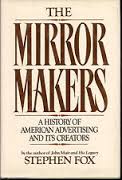Garden hermits, or ornamental hermits, were once people encouraged to live alone in purpose-built hermitages, follies, grottoes,…
Nineteenth Century Newspapers Cultivated a Practice called Puffing
When you read the newspaper, you generally know the difference between an article and an ad.
The Boston Globe, for example, in its Sunday magazine sometimes offers a section of several pages labeled at the top center simply ‘Advertisement.’ Thus the reader knows that the organization or company behind this material paid for this insert.
Things were a bit different for newspapers in the nineteenth century.
At that time it was common to include articles in the paper about products and organizations that had agreed to advertize. The articles offered a positive evaluation of the product or organization. The practice was called ‘puffing’.
Ellen Gruber Garvey writes in her book The Adman in the Parlor: “Puffing meant touting products or businesses in what appeared to be editorial matter in magazines and newspapers, and was a long-standing if sometimes controversial practice.”
 Patent medicines like Lydia Pinkham advertised extensively in nineteenth century newspapers and magazines. Stephen Fox in his book The Mirror Makers writes: “Newspapers might print editorials or news stories about the remarkable Mrs. Pinkham in the hope that she would renew their ad contracts.”
Patent medicines like Lydia Pinkham advertised extensively in nineteenth century newspapers and magazines. Stephen Fox in his book The Mirror Makers writes: “Newspapers might print editorials or news stories about the remarkable Mrs. Pinkham in the hope that she would renew their ad contracts.”
Thus there were was little separation between news stories and advertising.
The garden industry of that time took part in this practice as well.
Cheryl Lyon-Jenness writes in her article “Planting a Seed: The Nineteenth -Century Horticultural Boom in America” that editors sometimes “puffed” the products from seed companies and nurseries.
The division between advertising and news articles is not always clear even to this day, but in the nineteenth century when readers were sold goods in news columns, that division was even more difficult to discern.
The goal, of course, was to entice the consumer to buy a particular product.
The nineteenth century seed companies and nurseries participated in the practice of puffing, much like other businesses of that time.
This Post Has 0 Comments